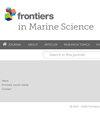海草量化波浪衰减:评估技术的综合综述
IF 3
2区 生物学
Q1 MARINE & FRESHWATER BIOLOGY
引用次数: 0
摘要
海草通常被称为生态系统工程师,在全球浅海水域发挥着至关重要的作用。它们不仅可以提供关键的生态效益,如生态系统恢复和碳封存,而且还可以提供显着的工程效益,包括泥沙稳定和波浪能量耗散。尽管它具有潜在的生物学效益,但海草诱导的波浪衰减背后的机制仍然没有得到充分的了解。此外,记录指标的不一致性使各种实验研究结果的比较复杂化。为了解决这些问题,本研究深入研究了评估海草草甸波浪衰减性能的六个关键参数:波浪能量耗散、阻力系数、波浪透射系数、波浪衰减系数、波浪诱导流速和湍流动能。本文系统回顾了2000年至2024年最相关的实验室实验研究,总结了这些关键参数在海草诱导波耗散分析中的进展、应用和性能,并讨论了其物理机制。研究了水流对海草诱导波衰减性能的影响。本研究结果为建立统一的框架来评估冠层特征和波浪特征对海草诱导的波浪衰减的影响奠定了基础,进一步有助于制定与海草恢复指导相结合的海岸保护政策。本文章由计算机程序翻译,如有差异,请以英文原文为准。
Quantifying wave attenuation by seagrass: a comprehensive review of assessment techniques
Seagrasses, often referred to as ecosystem engineers, play a vital role in shallow coastal waters worldwide. They can not only provide key ecological benefits such as ecosystem restoration and carbon sequestration, but also offer significant engineering benefits, including sediment stabilization and wave energy dissipation. Despite its potential biological benefits, the mechanisms behind seagrass-induced wave attenuation remain inadequately understood. Furthermore, inconsistencies in the recorded metrics complicate the comparison of findings across various experimental studies. This study aims to address these challenges by thoroughly examining six key parameters for assessing the wave attenuation performance of seagrass meadows: wave energy dissipation, drag coefficient, wave transmission coefficient, wave attenuation coefficient, wave-induced flow velocity, and turbulent kinetic energy. By systematically reviewing the most relevant lab-based experimental studies conducted from 2000 to 2024, this study summarises the developments, applications, and performance of these key parameters in analysing seagrass-induced wave dissipation, discussing the physical mechanism behind. The effects of currents on seagrass-induced wave attenuation performance are also investigated. The findings of this work provide a foundation for conducting a unified framework to assess the impact of canopy features and wave characteristics on seagrass-induced wave attenuation, further contributing to the development of coastal protection policies in combination with seagrass restoration guidance.
求助全文
通过发布文献求助,成功后即可免费获取论文全文。
去求助
来源期刊

Frontiers in Marine Science
Agricultural and Biological Sciences-Aquatic Science
CiteScore
5.10
自引率
16.20%
发文量
2443
审稿时长
14 weeks
期刊介绍:
Frontiers in Marine Science publishes rigorously peer-reviewed research that advances our understanding of all aspects of the environment, biology, ecosystem functioning and human interactions with the oceans. Field Chief Editor Carlos M. Duarte at King Abdullah University of Science and Technology Thuwal is supported by an outstanding Editorial Board of international researchers. This multidisciplinary open-access journal is at the forefront of disseminating and communicating scientific knowledge and impactful discoveries to researchers, academics, policy makers and the public worldwide.
With the human population predicted to reach 9 billion people by 2050, it is clear that traditional land resources will not suffice to meet the demand for food or energy, required to support high-quality livelihoods. As a result, the oceans are emerging as a source of untapped assets, with new innovative industries, such as aquaculture, marine biotechnology, marine energy and deep-sea mining growing rapidly under a new era characterized by rapid growth of a blue, ocean-based economy. The sustainability of the blue economy is closely dependent on our knowledge about how to mitigate the impacts of the multiple pressures on the ocean ecosystem associated with the increased scale and diversification of industry operations in the ocean and global human pressures on the environment. Therefore, Frontiers in Marine Science particularly welcomes the communication of research outcomes addressing ocean-based solutions for the emerging challenges, including improved forecasting and observational capacities, understanding biodiversity and ecosystem problems, locally and globally, effective management strategies to maintain ocean health, and an improved capacity to sustainably derive resources from the oceans.
 求助内容:
求助内容: 应助结果提醒方式:
应助结果提醒方式:


